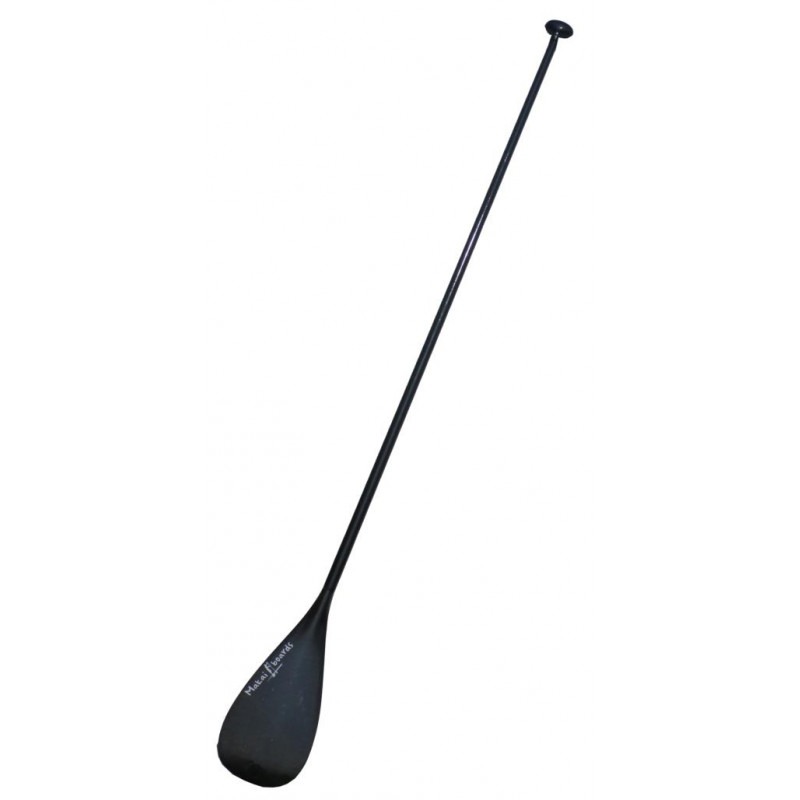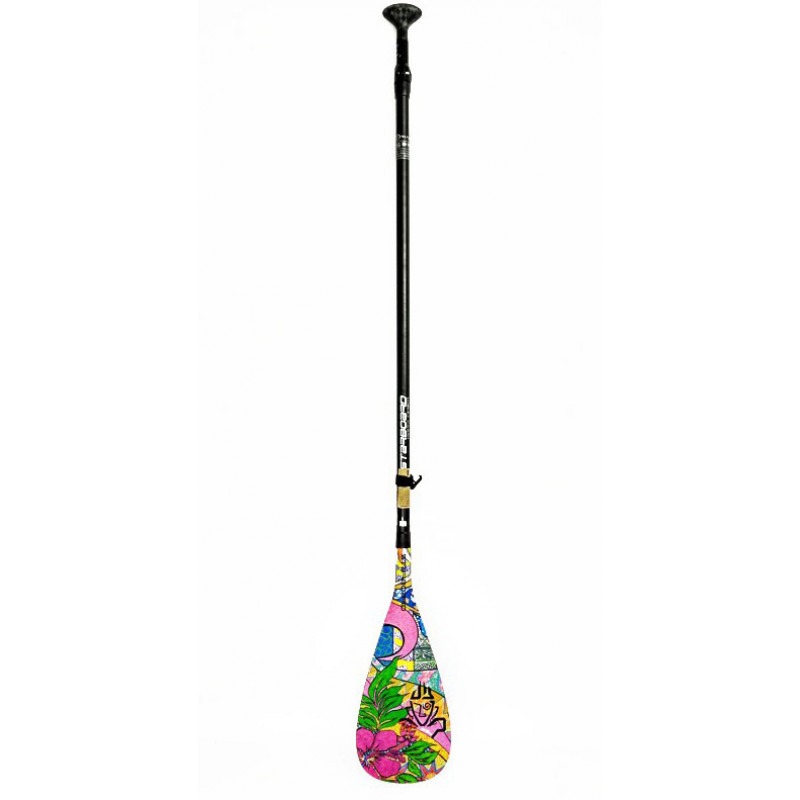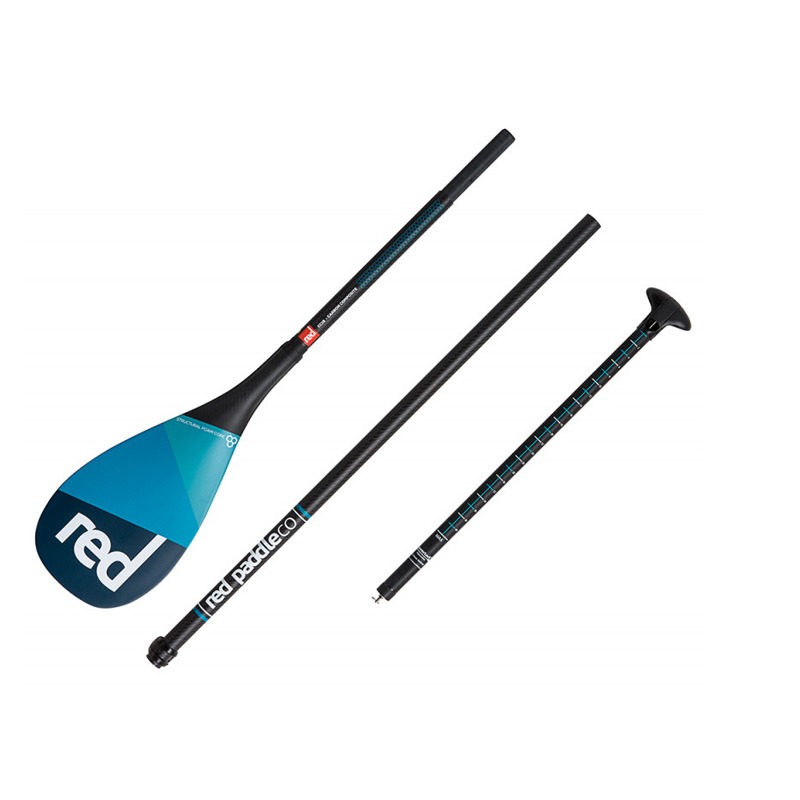We use cookies to ensure you get the best experience on our website. More Info.
How to choose your SUP Paddle? (Stand Up Paddle)
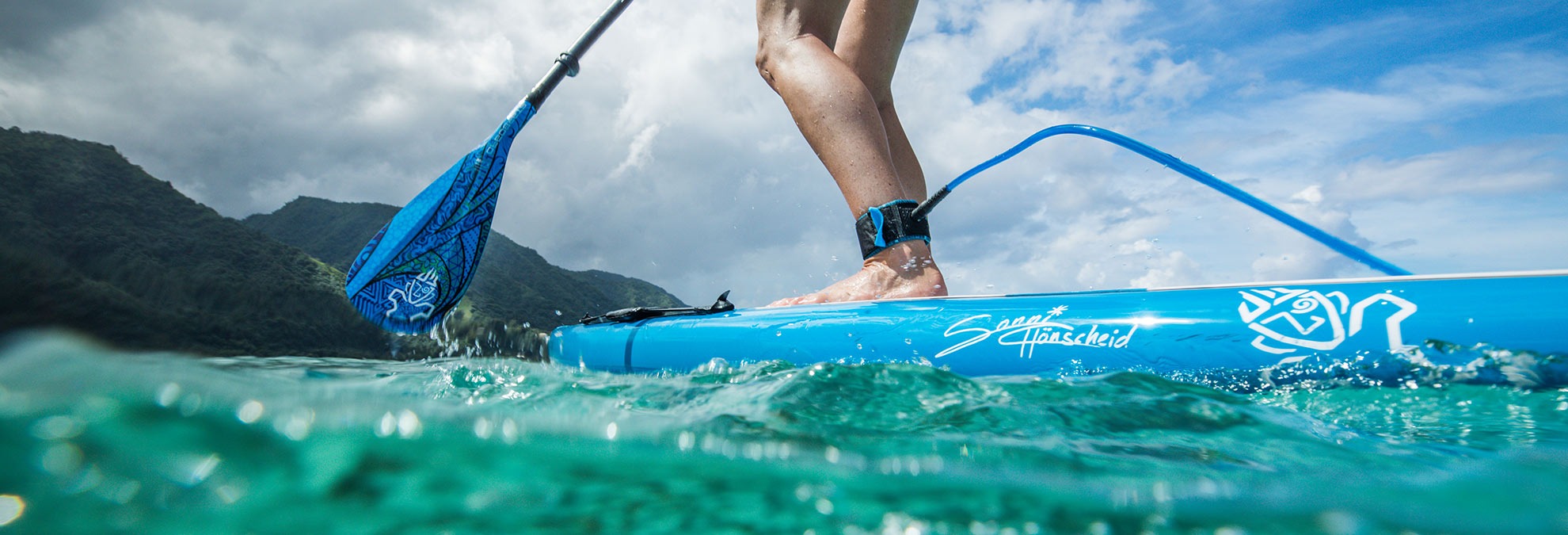
*This page is linked to the "How to choose your SUP" guide page. If you want to get the perfect board and paddle for your outings, be sure to read the information available on the 2 pages.*
To navigate in canoes, canoes, kayaks, etc., we need a paddle! It is one of the navigation tools that play a central role in the propulsion of your board on the water. The SUP paddle is a paddle specially used to push the stand-up paddle boards forward. Initially paddies for SUP were made of wood but over time, the materials of manufacture were diversified. (Aluminum and plastic paddles are for distractions while fiberglass, carbon or kevlar paddles are intended for regular SUP users.)
The SUP paddle is organized in three parts. Starting from the bottom up is the blade, the shaft and finally the grip. The blade is the element that is immersed under water, the grip is the part at the end of the handle that is held in hand and the shaft.
Choosing your paddle SUP is crucial for a good rowing motion and not to hurt your back or elsewhere. So how long? Wood or carbon? Adjustable or fixed?
- The different types of paddles
- How to choose your paddle according to your level?
- Which size to choose for my paddle?
- Which blade and shaft to choose for my paddle?
1. The different types of paddles
2. How to choose your paddle according to your level?
First, think about your level and intensity of practice in stand up paddle because we do not all have the same needs, whether for race or for touring. The paddle is reserved for personal use (unless you opt for an adjustable model) because it takes into account the size of its owner.
-
For beginners your choice will be, for example, towards a heavy-duty and economical aluminum paddle with a very stable blade in the water. These paddles are very cheap but their weight is quite high, their effectiveness is limited.
-
For a regular practice you can opt, for example, for a paddle (adjustable or fixed) with a hybrid handle in fiberglass/carbon or pure carbon and with a fiber blade, it is a good compromise quality/price ratio. You will have a paddle a little more solid and light with a better efficiency in your stroke of oar. It is still advisable to choose a fixed paddle for intermediate level to confirmed because your paddle will be even lighter and more reactive.
-
For intensive practice, we advise you to choose a carbon paddle. A more rigid and robust material and at the same time lighter, which will guarantee you much more pleasant with your intensive sessions. Their efficiency is maximum and the transfer of energy is without loss. The cost will also be higher for this kind of paddle.
3. Which size to choose for my paddle?
For a good paddle movement and not to hurt your back or hit the rail of your stand up paddle board with each change of side, the length of the paddle should be adapted to the size of the person. The idea is that during the train, the blade is completely immersed and the junction blade/shaft is at the rail level.
The "basic" rule is: Paddle length = your size + about 10-20cm
Each person has his own style and stroke, and for 2 individuals of the same size, it's not sure that they are using the same length of paddle. Legs rather tense or rather bent, bust straight or inclined, flat board or dug, sea and wind conditions ... As you can see, other factors come into account to define the right size of your paddle. The best is to test several sizes and as you progress, or even start with an adjustable paddle to adapt his stroke step by step.
Here are some good indicators to know if your paddle is the good length and if your gestures are correct:
Shoulders hurt? You regularly tap your board with your paddle, it means that your paddle is too long (risk of tendinitis to the shoulders, the elbows and risk of damaging your board as well as your paddle).
Low back hurt? You touch the water with the tip of the blade, it means that your paddle is too short (risk of prolonged pain in the lumbar and your body motion is ineffective).
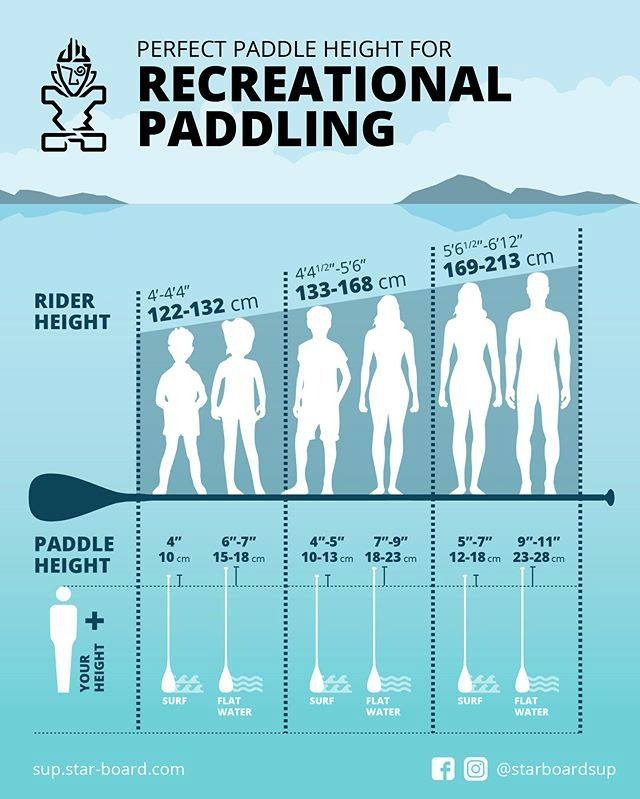
The size of the paddle can also vary according to the type of your practice:
-
For Touring: You can opt for a paddle length of between +15 cm and +20 cm in relation to your height. This will allow you to stay upright on your board, paddle without much effort and enjoy the landscape.
-
For Race: The length of your paddle may be between +10 cm and +20 cm in relation to your size. Short for more frequency, ideal in downwind or beach race. And long to have more amplitude, for races on still water, where it takes power and maintain the inertia of the board.
-
For SUP Surfing: The length of the paddle will be your size -5 cm to 10 cm, for more maneuverability in the waves and also because SUP Surf boards are less thick than the boards of SUP Race, you are less in height on the water.
4. Which blade and shaft to choose for my paddle?
To refine your choice as much as possible, you need to have an idea of what types of blades and shafts will be best for you. The two important elements for choosing a blade are:
a. The width of the blade
-
The smaller the blade of your paddle is, the less effort you need to put in each stroke of paddle. But you must keep a high pace to avoid losing speed. This blade shape is ideal for downwind and for beach races.
-
The wider the blade is, the more effort you must make to push with the paddle. You gain in power and therefore in speed, without having to increase the paddling frequency. This shape of blade is ideal on a calm water and little agitated.
-
On medium and high range paddles, the surface of the blade is often indicated on it, this surface is expressed in square/inch (in2) or square centimeter (cm2). But to make things easier, several manufacturers use a size classification such as XS, S, M, L or even XL.
a.1. The shape of the blade:
-
The longer the blade of your paddle is stretched out, the deeper you'll get the water to push you and you'll notice that you'll be less affected by the rails on your board.
-
The more the tip of the blade is square, the more grip you have. But beware, this type of blade does not forgive gestural errors. In case of any gestural error, your blade will tend to shiver from left to right in the water.
-
The more your blade's paddle is rounded (shaped like a drop of water), the more you'll forgive the placement mistakes. In counterpart, you will have more grip and you will tend to touch the board a bit more with your blade.
b. The shafts:
As we have seen a little bit earlier, there are several constructions: aluminum, fiberglass/carbon, full carbon.
-
The aluminum handles are heavy and rigid. To be used for practice and occasional rental.
-
For hybrid fiberglass/carbon handles, the higher the carbon content, the lighter and more resistant the paddle will be. The good compromise quality/price is 50/50.
-
The carbon shafts are lightweight and durable while offering a good flexibility to your stroke. Be careful though to the impacts and violent shocks that can weaken them. There is also a graduation of flexibility for full carbon shafts. We speak of SOFT handle, MEDIUM or HARD. SOFT for more flexibility (easier) and HARD for more responsiveness but it also requires more power. The good compromise is the MEDIUM one.

